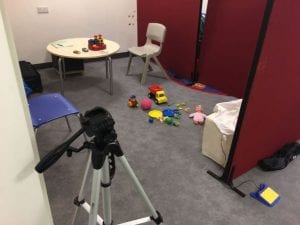The Laidlaw Leadership and Research Programme
By rmapapg, on 6 October 2017
By Lorenzo Molinari
During one of my study sessions in the IoE library, I came across a banner promoting “The Laidlaw Leadership and Research Programme”. Curious to know more about the scheme, I googled it and I started reading more. It took me two minutes to fall in love with it: two summer research-projects fully funded, a series of training workshops of the theme of leadership and ambassadorial work in different universities across the UK. It was undoubtedly a fantastic opportunity for first years and I didn’t think twice before apply!
The project I was involved with during my first summer is called “Brain Detectives: Design Experimental Task Design”, organised and hosted by the Centre for Research in Autism and Education (CRAE). During the course of six weeks, I took part in so many activities and here I’ll describe a few:
I went to special schools to help other researches run an Autism Diagnostic Observation Schedule test (ADOS), which is the standardised measure for assessing autism. Having nev er been in contact with autistic people in my life, this experience was fundamental for me to see with my own eyes who I was working for and to elucidate what the ultimate aim was: to improve the quality of life of autistic people. I also had the chance to talk to teachers and discuss more about the advantages of being in a special school, where each child is thoroughly followed and sustained during their learning process.

The picture shows the setting of an ADOS: participants were asked to play with different toys and their responses were noted down and later assessed by an ADOS-trained expert.
I contributed to the organisation, planning and running of CRAE’s research initiative and public engagement science workshops; Brain Detectives. Brain Detectives invites children and young people to take part in half-day workshops within the research lab where they engage in fun, interactive activities, designed to help them explore how the mind and brain work, whilst also participating in real psychological research. The event ran for six days, with two four-hour sessions (morning or afternoon) scheduled per day. During these sessions, I was responsible for leading the collection of my own research project data, to investigate whether autistic and non-autistic young people who took part possessed an enhanced perceptual load capacity by running a specially designed research task. Essential to the success of the workshops, is a team work ethos and I also contributed to many other aspects of the sessions, including meeting families, helping other researchers run their tests, and co-creating and delivering workshop presentations and activities.

This is me (!) next to the fantastic Brain Detectives banner. Please, note the wooden badge on my t-shirt – directly from the Institute of Making!
I secured and electronically stored all the data that I collected, to then perform statistical data analysis to confirm the hypothesis raised in the research question. In order to do so, I have been trained on how to use the statistical software SPSS-Statistics to run correlation, regression and normality tests. Owing to the success of my project, I agreed with my supervisor to write a final report of approximately 5000 words, following the format Introduction, Methods, Results and Conclusion. I was able to write a literary review for the Introduction and the Methods of the experiments even before the beginning of our testing, but I had to wait until the end of our testing sessions to write up the Results and Conclusion.
The experience I had at CRAE is simply invaluable: researchers were very supportive and able to help me whenever I struggled, the environment was always very professional and motivated me to work harder and harder and, last but not least, I had so much fun with my colleagues outside working hours.
If you are interested in a career in academia or if you are looking for a research experience in early stages of your academic career, the Laidlaw scheme is definitely what you are looking for. Personally, I am now even more convinced that what I want to do in my future is pursuing an academic career.
 Close
Close


